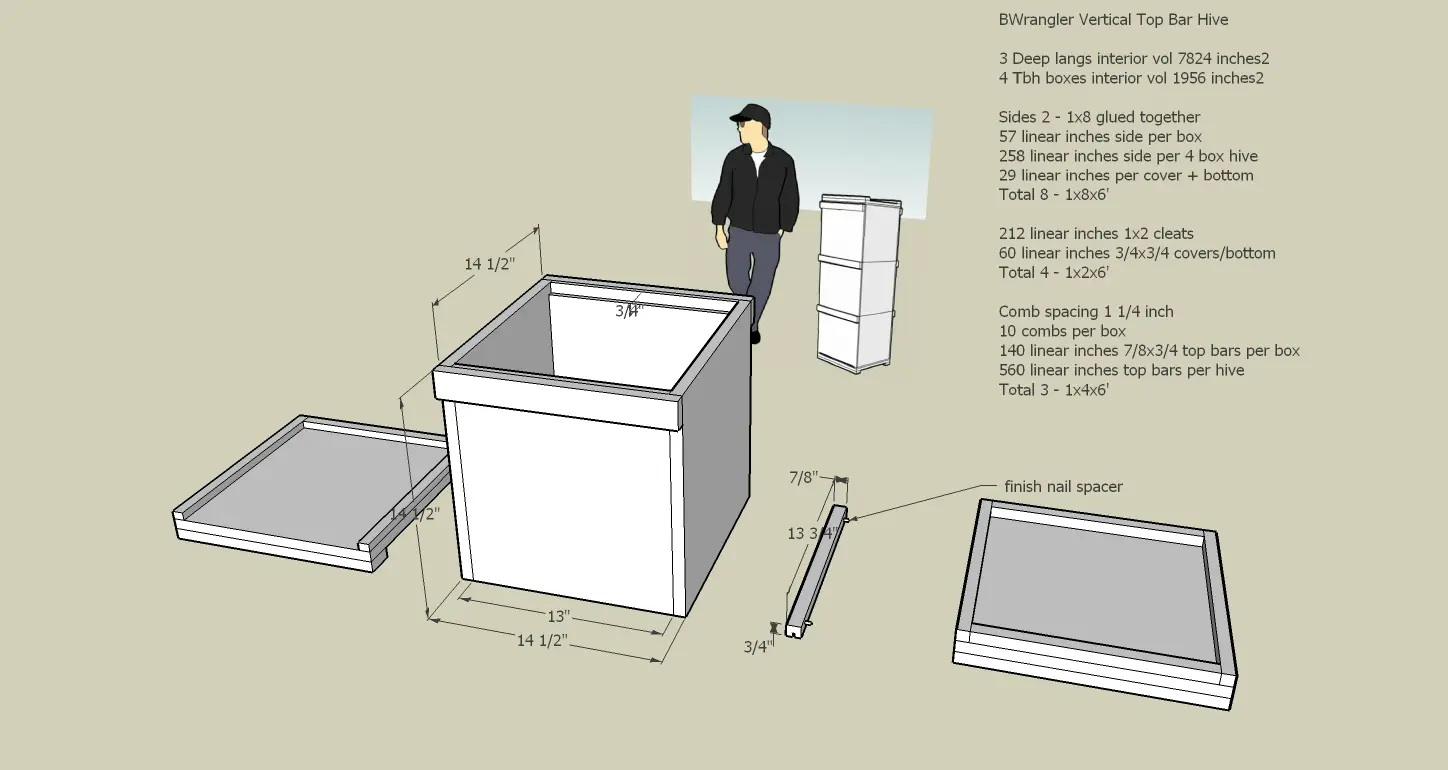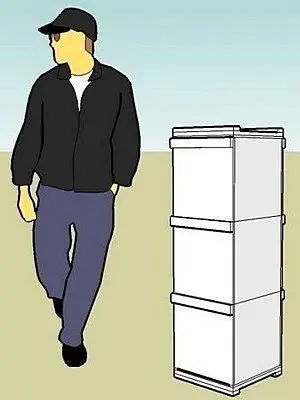Bee Buzz - Embrace the Vertical Top Bar Hive!

Hey Bee Enthusiasts! ✨ Ever heard of a Vertical Top Bar Hive? Let’s explore this buzz-worthy design
that’s all about creating a sweet haven for our honey-making friends.
The Blueprint
I’ve crafted a version of a vertical top bar hive with some fantastic features:
- Designed for bustling bees thriving in a northern climate.
- Tall enough for the development of small cell-sized comb.
- One box per season rotation for simplicity.
- Square configuration for efficiency.
- Interchangeable cover and bottom for flexibility.
- Self-spacing top bars for easy maintenance.
- Comb spaced at 1 1/4″ for optimal use.
- Migratory and stackable for convenience.
- Conventional construction material for accessibility.
- Easy construction with minimal cuts/parts.
- Optimal material use for sustainability.

-Introducing the Three Box Vertical Top Bar Hive!
Warre’? Not Quite.
This design takes inspiration from the Warre’ hive principles but brings its own flair:
- Larger and taller for enhanced bee functionality
- Thinner walls for efficiency
- Simple migratory-style cover/bottom board for practicality
Why is this design a winner for my beekeeping? Let’s dive into the hive’s sweet spot!
In my horizontal top bar hives, bees initially draw out comb about 12 to 14 inches wide, later finishing the rest with drone comb. So, I’ve set the hive width there.
To achieve an effective small cell-sized core, the box height needs to be at least 9 inches. Check, and we’ve got it covered!
My bees consistently overwinter in a cluster about 11 to 13 inches in diameter. That’s roughly the minimum interior width of my hive, ensuring comfort for my bees.
For a prolific colony in my climate, a three-deep Lang hive is the sweet spot, providing enough space for the cluster and sufficient food. A taller, square hive would need at least four boxes for equal volume, larger than the Warre’ hive designed for Europe’s native bees.
While my cover may differ from the insulated Warre’ hive principles, it suits my climate as proven by my winter condensation observations. Need more insulation? External blue construction foam panels can do the trick.
Concerned about top bar thickness? I’ve struck a balance between minimal impact on comb building and robustness for effective comb management.
The flat cover/bottom boards are convertible and stackable, essential for a migratory hive.
Building Buzz
Crafting this hive is a breeze. Glue two 1″ x 8″ x 3/4″ pieces of lumber together to create the building stock, allowing for a square hive, 14 1/2 inches on each side.
Boxes
Front and back have a rabbit cut for top bars, and every box has a lifting cleat attached to the front and back.
Top Bars

-Introducing the Four Box Vertical Top Bar Hive!
Cut top bars from 3/4″ stock, measuring 7/8″ wide and 13 5/8″ long. Two finish nails, driven to the proper depth, create a 3/8″ space between the bars, allowing for self-spacing. A thin notch down the center accommodates a foundation-based starter strip or a bead of beeswax.
Eleven top bars on 1 1/4″ spacing will make a tight fit, perfect if you don’t plan on manipulating comb frequently. Adjust to ten bars for additional working room.
Different comb spacings can be easily managed by varying the depth the finish nails are driven into the top bar. Ten bars spaced at 1 1/4″ will offer a half-comb width of free space on each side.
Cover/Bottom
Both are identical migratory components with 3/4″ wood strips around their edges. The bottom lacks a front strip, providing an entrance. Tack the front strip in place for easy conversion between cover and bottom.
End grain is exposed, as conventional covering traps moisture. With minimal hive management, nail both cover and bottom to the hive body with galvanized roofing nails.
Simple Management
Managing this hive is a breeze. At the season’s end, check the hive’s weight. If it’s heavy enough, remove the top box, harvest honey, and return the empty box to the bottom. If not, feed or add a spare feed box on top.
I haven’t built or managed bees in this hive yet, but it’s the most exciting project on my list. I’ll keep you posted on how it goes.
Bee well and happy beekeeping! ✨ -Cheers, D 🐝🤠
